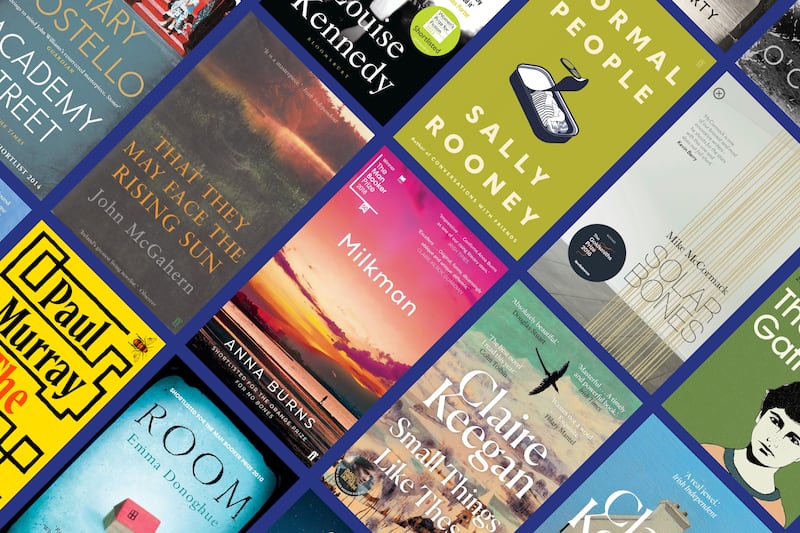Your new book Land is All That Matters covers the 200 years between the famine of 1741 and the second World War. What made you take on such a huge subject?
I’d love to say that I had been itching to write this book for years but the simple answer is that it was a project my editor in Head of Zeus, Neil Belton, had wanted to do for a long time, a single-volume history of the struggle for land in Ireland. Partly because my last book Four Killings dealt with illegal land seizures during the War of Independence, and partly because I had already written a lot about the land wars of the 1880s, Neil told me that he thought I was the one to do it, and you don’t argue with Neil Belton.
Do you think the land struggles have in the past been neglected in favour of the nationalist narrative of trying to gain independence?
Probably not neglected, but certainly subordinated. Agrarian insurgencies predated the struggle for independence. Most were far more prolonged, bloody and militarily effective than nationalist uprisings (bar 1798). The Whiteboys and the Ribbonmen also coached and prepared rural Ireland (where most of the fighting took place) for the Anglo-Irish War. As far as I’m concerned, and I say this in the book, terroir trumped patrie.
One of the main thesis in your book is that Ireland is not the classless society that it thinks it is. There was a hierarchy in rural Ireland based on the land and it wasn’t just between the Anglo-Irish classes and their tenants. Can you elaborate?
The Meath poet Francis Ledwidge was not deemed to be of sufficiently exalted social status to marry his beloved Ellie Vaughey because his people owned a kitchen garden and hers owned a farm. Rural Ireland was riddled with such class distinctions, “tuppence halfpenny looking down on tuppence”. The struggle for land was not just a no-holds-barred contest between landlord and tenant, intra-tenant rivalries and animosities were almost as important. Tipperary was in a virtual state of civil war in the early 1800s as the landless and land-deprived Caravats, and the middle-class vigilantes, the Shanavests, took lumps out of each other. A century later small tillage farmers confronted large livestock graziers (”The land for the people, the bullock for the road”) while the aristocracy looked on from the sidelines. There were no landlords involved in the brutal murders of five members of the Joyce family in Maamtrasna in 1882. They were killed by their neighbours.
[ Land Is All That Matters by Myles Dungan: class act, but class matters tooOpens in new window ]
To a greater or lesser extent the land question was largely resolved by independence in 1921. To what extent do you think the resolution of that issue contributed to the conservative, stable society that Ireland became?
What came to pass was exactly what the Tories had been angling for in the late 19th and early 20th century as a hedge against Home Rule. Some 400,000 owner-occupied holdings with instinctively conservative farmers more concerned with paying off their government loans than playing politics. The Great War (leading to the Easter Rising executions and the pivotal Conscription crisis) ruined that antidevolutionary master plan and the first government of the Irish Free State (the Cumann na nGaedheal “conservative revolutionaries” of Kevin O’Higgins) was the beneficiary instead.
You’re the presenter of the very popular History Show on RTÉ Radio 1. How would you assess the state of Irish historiography at present?
I would suggest that it has never been better. We are blessed with a generation of Irish academic historians (Diarmaid Ferriter, Lindsey Earner Byrne, Paul Rouse, Marie Coleman, Terry Dooley et al) who are themselves blessed with the common touch and who are not afraid to demystify and popularise their subject. Government support for the Decade of Centenaries, funding from Creative Ireland for local heritage projects, the digitisation of the 1901 and 1911 censuses (it’s high time to make Catriona Crowe a Duchess), the digitisation of the Bureau of Military History Witness Statements and the Military Service Pensions Collection (it’s high time to make Cécile Chemin a Marchioness) have made historians of us all. It’s never been a better time to be an Irish historian. When you tell American academics that Ireland has not one, but two nationally broadcast radio programmes devoted entirely to history they assume you’ve been overindulging in what made Bushmills, Co Antrim famous.
Have you ever made a literary pilgrimage?
I visited Hemingway’s house in Key West, Florida and then hung out in his favourite Havana bars 90 miles away. The Cuban bars were more fun.
What is the best writing advice you have heard?
Read.
Who do you admire the most?
Whoever invented audiobooks.
Which current book, film and podcast would you recommend?
I couldn’t put down Ricky O’Rawe’s book on Freddie Scapaticci Stakeknife’s Dirty War. I am anxiously awaiting the next series of Apple TV’s Slow Horses by Mick Herron (which sort of qualifies as a film) and, despite its imperfections, I’ve become addicted to the podcast American Elections: Wicked Game.
What is the most beautiful book you own?
Large leather-bound volumes of every Punch magazine from 1841-1891. I bought them at an Usher’s auction in my hometown of Kells for quite a little really.
What is your favourite quotation?
‘Always be yourself. Unless you can be a unicorn. Then always be a unicorn.’
A book to make me laugh?
Absolutely anything by Terry Pratchett, or the genius that was PG Wodehouse.
A book that might move me to tears?
The most recent book to move me to tears was actually Martin Doyle’s poignant and angry Dirty Linen.


















